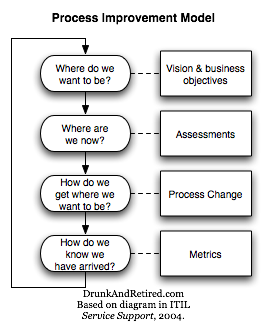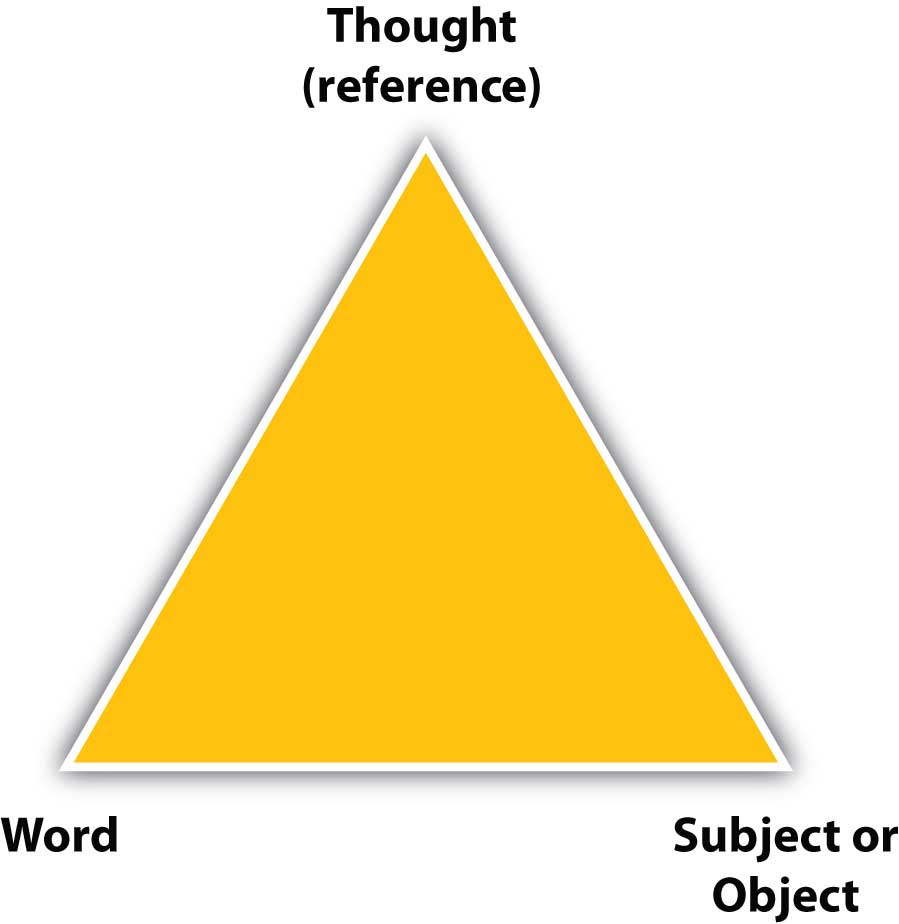Learning Objective
- Explain why preparation is important in business writing.
- Identify and describe five key principles of verbal communication.
- Explain how the rules of syntax, semantics, and context govern language.
- Describe how language serves to shape our experience of reality.
- Describe and define four strategies that can give emphasis to your message.
- Demonstrate the effective use of visuals in an oral or written presentation.
- Demonstrate the effective use of signposts, internal summaries and foreshadowing, and repetition in an oral or written presentation.
Introduction
“How do I prepare myself for writing?” is a common question and one that has no single correct answer. When do you do your best work? Whatever your work or task may be, it doesn’t have to be writing. Some people work best in the morning, others only after their daily dose of coffee. Still others burn the midnight oil and work well late into the night while their colleagues lose their productive edge as the sun sets. “To thine own self be true,” is a great idea when you have the freedom to choose when you work, but increasingly our lives are governed by schedules and deadlines that we do not control. You may have a deadline that requires you to work late at night when you recognize that you are far more productive early in the morning. If you can, consider one important step to writing success: know when you are most productive. If you cannot choose your timing, then dedication and perseverance are required. The job must be completed and the show must go on. Your effort demonstrates self-control and forbearance (as opposed to impatience and procrastination) and implies professionalism.
To be productive, you have to be alert, ready to work, and can accomplish tasks with relative ease. You will no doubt recognize that sometimes tasks take a lot longer, the solution is much harder to find, and you may find work more frustrating at other times. If you have the option, try to adjust your schedule so the writing tasks before you can be tackled at times when you are most productive, where you ability to concentrate is best, and when you are your most productive. If you don’t have the option, focus clearly on the task before you.
Every individual is different, and what works for one person may be ineffective for someone else. One thing that professional writers agree on, however, is that you don’t need to be in the “right mood” to write—and that, in fact, if you wait for the right mood to strike, you will probably never get started at all. Ernest Hemingway, who wrote some of the most famous novels of the twentieth century as well as hundreds of essays, articles, and short stories, advised writers to “work every day. No matter what has happened the day or night before, get up and bite on the nail” (Hemingway, 1999).
In order for your work to be productive, you will need to focus your attention on your writing. The stereotype of the writer tucked away in an attic room or a cabin in the woods, lost in the imaginary world created by the words as they flow onto the page, is only a stereotype. Our busy lives involve constant interruption. In a distraction-prone business environment, much of your writing will be done while colleagues are talking on the phone, having face-to-face conversations as they walk by, and possibly stopping at your desk to say hello or ask a question. Your phone may ring or you may have incoming instant messages (IMs) that need to be answered quickly. These unavoidable interruptions make it even more important to develop a habit of concentrating when you write.
The mind has been likened to a brace of wild horses; if you have ever worked with horses, you know they each have a mind of their own. Taken individually they can be somewhat manageable, but together they can prove to be quite a challenge. Our minds can multitask and perform several tasks simultaneously, but we can also get easily distracted. We can get sidetracked and lose valuable time away from our designated task. Our ability to concentrate is central to our ability to write effectively, whether we work alone or as part of a team.
In many business situations, you may not be writing solo but instead collaborating on a document with various coworkers, vendors, or customers. The ability to concentrate is perhaps even more important in these group writing situations (Nickerson, Perkins, & Smith, 1985). In this discussion, we’ll consider the writing process from a singular perspective, where you are personally responsible for planning, researching, and producing a product of writing. In other areas of this text we also consider the collaborative process, its strengths and weaknesses, and how to negotiate and navigate the group writing process.
In contrast, verbal communication is based on several basic principles. In this section, we’ll examine each principle and explore how it influences everyday communication. Whether it’s a simple conversation with a coworker or a formal sales presentation to a board of directors, these principles apply to all contexts of communication.
Language Has Rules
Language is a code, a collection of symbols, letters, or words with arbitrary meanings that are arranged according to the rules of syntax and are used to communicate (Pearson & Nelson, 2000). Complete the Note 2.1 “Introductory Exercises” for this chapter. Were you able to successfully match the terms to their meanings? Did you find that some of the definitions did not match your understanding of the terms? The words themselves have meaning within their specific context or language community. But without a grasp of that context, “my bad” may have just sounded odd. Your familiarity with the words and phrases may have made the exercise easy for you, but it isn’t an easy exercise for everyone. The words themselves only carry meaning if you know the understood meaning and have a grasp of their context to interpret them correctly.
There are three types of rules that govern or control our use of words. You may not be aware that they exist or that they influence you, but from the moment you put a word into text or speak it, these rules govern your communications. Think of a word that is all right to use in certain situations and not in others. Why? And how do you know?
Syntactic rules govern the order of words in a sentence. In some languages, such as German, syntax or word order is strictly prescribed. English syntax, in contrast, is relatively flexible and open to style. Still, there are definite combinations of words that are correct and incorrect in English. It is equally correct to say, “Please come to the meeting in the auditorium at twelve noon on Wednesday” or, “Please come to the meeting on Wednesday at twelve noon in the auditorium.” But it would be incorrect to say, “Please to the auditorium on Wednesday in the meeting at twelve noon come.”
Semantic rules govern the meaning of words and how to interpret them (Martinich, 1996). Semantics is the study of meaning in language. It considers what words mean, or are intended to mean, as opposed to their sound, spelling, grammatical function, and so on. Does a given statement refer to other statements already communicated? Is the statement true or false? Does it carry a certain intent? What does the sender or receiver need to know in order to understand its meaning? These are questions addressed by semantic rules.
Contextual rules govern meaning and word choice according to context and social custom. For example, suppose Greg is talking about his coworker, Carol, and says, “She always meets her deadlines.” This may seem like a straightforward statement that would not vary according to context or social custom. But suppose another coworker asked Greg, “How do you like working with Carol?” and, after a long pause, Greg answered, “She always meets her deadlines.” Are there factors in the context of the question or social customs that would influence the meaning of Greg’s statement?
Even when we follow these linguistic rules, miscommunication is possible, for our cultural context or community may hold different meanings for the words used than the source intended. Words attempt to represent the ideas we want to communicate, but they are sometimes limited by factors beyond our control. They often require us to negotiate their meaning, or to explain what we mean in more than one way, in order to create a common vocabulary. You may need to state a word, define it, and provide an example in order to come to an understanding with your audience about the meaning of your message.
Our Reality Is Shaped by Our Language
What would your life be like if you had been raised in a country other than the one where you grew up? Malaysia, for example? Italy? Afghanistan? Or Bolivia? Or suppose you had been born male instead of female, or vice versa. Or had been raised in the northeastern United States instead of the Southwest, or the Midwest instead of the Southeast. In any of these cases, you would not have the same identity you have today. You would have learned another set of customs, values, traditions, other language patterns, and ways of communicating. You would be a different person who communicated in different ways.
You didn’t choose your birth, customs, values, traditions, or your language. You didn’t even choose to learn to read this sentence or to speak with those of your community, but somehow you accomplished this challenging task. As an adult, you can choose to see things from a new or diverse perspective, but what language do you think with? It’s not just the words themselves, or even how they are organized, that makes communication such a challenge. Your language itself, ever changing and growing, in many ways determines your reality (Whorf, 1956). You can’t escape your language or culture completely, and always see the world through a shade or tint of what you’ve been taught, learned, or experienced.
Suppose you were raised in a culture that values formality. At work, you pride yourself on being well dressed. It’s part of your expectation for yourself and, whether you admit it or not, for others. Many people in your organization, however, come from less formal cultures, and they prefer business casual attire. You may be able to recognize the difference, and because humans are highly adaptable, you may get used to a less formal dress expectation, but it won’t change your fundamental values.
Thomas Kuhn makes the point that “paradigms, or a clear point of view involving theories, laws, and/or generalizations that provide a framework for understanding, tend to form and become set around key validity claims, or statements of the way things work.” (McLean, 2003) The paradigm, or worldview, may be individual or collective. And paradigm shifts are often painful. New ideas are always suspect, and usually opposed, without any other reason than because they are not already common (Ackerman, 1980).
As an example, consider the earth-heavens paradigm. Medieval Europeans believed that the Earth was flat and that the edge was to be avoided, otherwise you might fall off. For centuries after the acceptance of a “round earth” belief, the earth was still believed to be the center of the universe, with the sun and all planets revolving around it. Eventually, someone challenged the accepted view. Over time, despite considerable resistance to protect the status quo, people came to better understand the earth and its relationship to the heavens.
In the same way, the makers of the Intel microprocessor once thought that a slight calculation error, unlikely to negatively impact 99.9 percent of users, was better left as is and hidden (Emery, 1996). Like many things in the information age, the error was discovered by a user of the product, became publicly known, and damaged Intel’s credibility and sales for years. Recalls and prompt, public communication in response to similar issues are now the industry-wide protocol.
Paradigms involve premises that are taken as fact. Of course the Earth is the center of the universe, of course no one will ever be impacted by a mathematical error so far removed from most people’s everyday use of computers, and of course you never danced the macarena at a company party. We now can see how those facts, attitudes, beliefs, and ideas of “cool” are overturned.
How does this insight lend itself to your understanding of verbal communication? Do all people share the same paradigms, words, or ideas? Will you be presenting ideas outside your audience’s frame of reference? Outside their worldview? Just as you look back at your macarena performance, get outside your frame of reference and consider how to best communicate your thoughts, ideas, and points to an audience that may not have your same experiences or understanding of the topic.
By taking into account your audience’s background and experience, you can become more “other-oriented,” a successful strategy to narrow the gap between you and your audience. Our experiences are like sunglasses, tinting the way we see the world. Our challenge, perhaps, is to avoid letting them function as blinders, like those worn by working horses, which create tunnel vision and limit our perspective.
Language Is Arbitrary and Symbolic
As we have discussed previously, words, by themselves, do not have any inherent meaning. Humans give meaning to them, and their meanings change across time. The arbitrary symbols, including letters, numbers, and punctuation marks, stand for concepts in our experience. We have to negotiate the meaning of the word “home,” and define it, through visual images or dialogue, in order to communicate with our audience.
Words have two types of meanings: denotative and connotative. Attention to both is necessary to reduce the possibility of misinterpretation. The denotative meaning is the common meaning, often found in the dictionary. The connotative meaning is often not found in the dictionary but in the community of users itself. It can involve an emotional association with a word, positive or negative, and can be individual or collective, but is not universal.
With a common vocabulary in both denotative and connotative terms, effective communication becomes a more distinct possibility. But what if we have to transfer meaning from one vocabulary to another? That is essentially what we are doing when we translate a message. In such cases, language and culture can sometimes make for interesting twists. The New York Times (Sterngold, 1998) noted that the title of the 1998 film There’s Something About Mary proved difficult to translate when it was released in foreign markets. The movie was renamed to capture the idea and to adapt to local audiences’ frame of reference: In Poland, where blonde jokes are popular and common, the film title (translated back to English for our use) was For the Love of a Blonde. In France, Mary at All Costs communicated the idea, while in Thailand My True Love Will Stand All Outrageous Events dropped the reference to Mary altogether.
Capturing our ideas with words is a challenge when both conversational partners speak the same language, but across languages, cultures, and generations the complexity multiplies exponentially.
Language Is Abstract
Words represent aspects of our environment, and can play an important role in that environment. They may describe an important idea or concept, but the very act of labeling and invoking a word simplifies and distorts our concept of the thing itself. This ability to simplify concepts makes it easier to communicate, but it sometimes makes us lose track of the specific meaning we are trying to convey through abstraction. Let’s look at one important part of life in America: transportation.
Take the word “car” and consider what it represents. Freedom, status, or style? Does what you drive say something about you? To describe a car as a form of transportation is to consider one of its most basic and universal aspects. This level of abstraction means we lose individual distinctions between cars until we impose another level of labeling. We could divide cars into sedans (or saloon) and coupe (or coupé) simply by counting the number of doors (i.e., four versus two). We could also examine cost, size, engine displacement, fuel economy, and style. We might arrive at an American classic, the Mustang, and consider it for all these factors and its legacy as an accessible American sports car. To describe it in terms of transportation only is to lose the distinctiveness of what makes a Mustang a desirable American sports car.
We can see how, at the extreme level of abstraction, a car is like any other automobile. We can also see how, at the base level, the concept is most concrete. “Mustang,” the name given to one of the best-selling American sports cars, is a specific make and model with specific markings; a specific size, shape, and range of available colors; and a relationship with a classic design. By focusing on concrete terms and examples, you help your audience grasp your content.
Language Organizes and Classifies Reality
We use language to create and express some sense of order in our world. We often group words that represent concepts by their physical proximity or their similarity to one another. For example, in biology, animals with similar traits are classified together. An ostrich may be said to be related to an emu and a nandu, but you wouldn’t group an ostrich with an elephant or a salamander. Our ability to organize is useful, but artificial. The systems of organization we use are not part of the natural world but an expression of our views about the natural world.
What is a doctor? A nurse? A teacher? If a male came to mind in the case of the word “doctor” and a female came to mind in reference to “nurse” or “teacher,” then your habits of mind include a gender bias. There was once a time in the United States where that gender stereotype was more than just a stereotype, it was the general rule, the social custom, the norm. Now it no longer holds true. More and more men are training to serve as nurses. Business Week noted in 2008 that one-third of the U.S. physician workforce was female (Arnst, 2005).
We all use systems of classification to navigate through the world. Imagine how confusing life would be if we had no categories such as male/female, young/old, tall/short, doctor/nurse/teacher. These categories only become problematic when we use them to uphold biases and ingrained assumptions that are no longer valid. We may assume, through our biases, that elements are related when they have no relationship at all. As a result, our thinking is limited and our grasp of reality impaired. It is often easier to spot these biases in others, but it behooves us as communicators to become aware of them in ourselves. Holding them unconsciously will limit our thinking, our grasp of reality, and our ability to communicate successfully.
Exercises
- Write at least five examples of English sentences with correct syntax. Then rewrite each sentence, using the same words in an order that displays incorrect syntax. Compare your results with those of your classmates.
- Think of at least five words whose denotative meaning differs from their connotative meaning. Use each word in two sentences, one employing the denotative meaning and the other employing the connotative. Compare your results with those of your classmates.
- Do you associate meaning with the car someone drives? Does it say something about them? List five cars you observe people you know driving and discuss each one, noting whether you perceive that the car says something about them or not. Share and compare with classmates.
One key to communication is capturing and holding the audience’s attention. No one likes to be bored, and no communicator likes to send boring messages. To keep your communications dynamic and interesting, it often helps to use specific strategies for emphasis. Let’s examine some of these strategies and how to use them to strengthen your message.
Visual Communication
Adding the visual dimension to a document or speech can be an excellent way to hold your audience’s interest and make your meaning clear. But be careful not to get carried away. Perhaps the most important rule to remember in using visuals is this: the visuals are to support your document or presentation, not to take the place of it. A picture may be worth a thousand words, but it is the words that really count. Make sure that your communication is researched, organized, and presented well enough to stand on its own. Whatever visuals you choose should be clearly associated with your verbal content, repeating, reinforcing, or extending the scope of your message.
Figure 3.6 “Strategic Use of Visuals” lists some common types of visuals and gives examples of their strategic uses.
Figure 3.6 Strategic Use of Visuals
| Type | Purpose | Example(s) |
|---|---|---|
| Photograph, Video Clip, or Video Still | Show an actual person, event, or work of art. |
Figure 2.3 Historic photo of U.S. troops raising the flag on Iwo Jima. USMC Archives – Flag Raising on Iwo Jima – CC BY 2.0. |
| Video Trailer, Video Still | Show the visual relationships among two or more things; a shape, a contrast in size, a process or how something works. |
|
| Bar Chart | Show the amount of one or more variables at different time intervals. |
|
| Pie Chart | Show the percentages of the whole occupied by various segments. |
|
| Line Graph | Show the change in one or more variables progressively across time. |
|
| Actual Object | Show the audience an item crucial to the discussion. |
|
| Body Motion | Use your body as a visual to demonstrate an event. |
Signposts
Signposts (or indictors) are key words that alert the audience to a change in topic, a tangential explanation, an example, or a conclusion. Readers and listeners can sometimes be lulled into “losing their place”—forgetting what point is being made or how far along in the discussion the writer or speaker has gotten. You can help your audience avoid this by signaling to them when a change is coming.
Common signposts include “on the one hand,” “on the other hand,” “the solution to this problem is,” “the reason for this is,” “for example,” “to illustrate,” and “in conclusion” or “in summary.”
Internal Summaries and Foreshadowing
Like signposts, internal summaries and foreshadowing help the audience to keep track of where they are in the message. These strategies work by reviewing what has been covered and by highlighting what is coming next.
As a simple example, suppose you are writing or presenting information on how to assemble a home emergency preparedness kit. If you begin by stating that there are four main items needed for the kit, you are foreshadowing your message and helping your audience to watch or listen for four items. As you cover each of the items, you can say, “The first item,” “The second item,” “Now we’ve got X and Y in our kit; what else do we need? Our third item is,” and so forth. These internal summaries help your audience keep track of progress as your message continues. (The four items, by the way, are water, nonperishable food, first aid supplies, and a dust mask.) (Federal Emergency Management Administration, 2009)
With this strategy, you reinforce relationships between points, examples, and ideas in your message. This can be an effective strategy to encourage selective retention of your content.
Repetition
Saying the same word over and over may not seem like an effective strategy, but when used artfully, repetition can be an effective way to drive home your meaning and help your audience retain it in their memory. Many of history’s greatest speakers have used repetition in speeches that have stood the test of time. For example, British Prime Minister Winston Churchill gave a speech in 1940 that is remembered as his “We Shall Fight” speech; in it he repeats the phrase “we shall fight” no fewer than six times. Similarly, in his famous “I Have a Dream” speech, Martin Luther King Jr. repeated the phrases “I have a dream” and “let freedom ring” with unforgettable effect.
Another form of repetition is indirect repetition: finding alternative ways of saying the same point or idea. Suppose your main point was, “global warming is raising ocean levels.” You might go on to offer several examples, citing the level in each of the major oceans and seas while showing them on a map. You might use photographs or video to illustrate the fact that beaches and entire islands are going underwater. Indirect repetition can underscore and support your points, helping them stand out in the memory of your audience.
Exercises
- Find a news article online or in a newspaper or magazine that uses several visuals. What do the visuals illustrate? Would the article be equally effective without them? Why or why not? Share your findings with your class.
- Find an article or listen to a presentation that uses signposts. Identify the signposts and explain how they help the audience follow the article or presentation. Share your findings with your class.
- Find the legend on a map. Pick one symbol and describe its use. Share and compare with the class.
References
Ackerman, B. A. (1980). Social justice in the liberal state. New Haven, CT: Yale University Press.
Arnst, C. (2005, April 17). Are there too many women doctors? As an MD shortage looms, female physicians and their flexible hours are taking some of the blame. Business Week. Retrieved from http://www.businessweek.com/magazine/content/08_17/b4081104183847.htm.
DeVito, J. (1999). Messages: building interpersonal communication skills (p. 119). New York, NY: Addison Wesley Longman.
Emery, V. (1996). The Pentium chip story: A learning experience. Retrieved from http://www.emery.com/1e/pentium.htm.
Federal Emergency Management Administration. (2009). Get a kit. Retrieved from http://www.ready.gov/america/getakit.
Kuhn, T. (1996). The structure of scientific revolutions (3rd ed.). Chicago, IL: University of Chicago Press.
Martinich, A. P. (Ed.). (1996). The philosophy of language (3rd ed.). Oxford, UK: Oxford University Press.
McLean, S. (2003). The basics of speech communication (p. 50). Boston, MA: Allyn & Bacon.
Pearson, J., & Nelson, P. (2000). An introduction to human communication: Understanding and sharing (p. 54). Boston, MA: McGraw-Hill.
Sterngold, J. (1998, November 15). Lost, and gained, in the translation. New York Times. Retrieved from http://www.nytimes.com.
Whorf, B. L. (1956). Science and linguistics. In J. B. Carroll (Ed.), Language, thought and reality (pp. 207–219). Cambridge, MA: MIT Press.
Candela Citations
- Business Communication for Success. Authored by: University of Minnesota. Located at: https://open.lib.umn.edu/businesscommunication/. License: CC BY-NC-SA: Attribution-NonCommercial-ShareAlike








